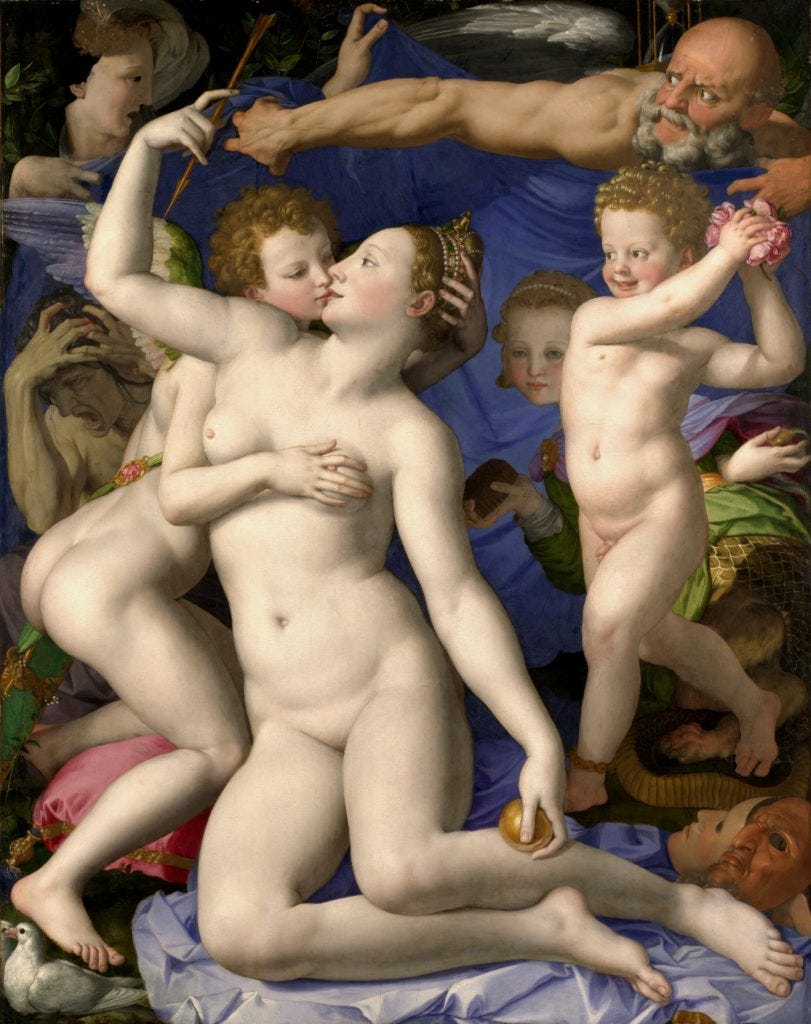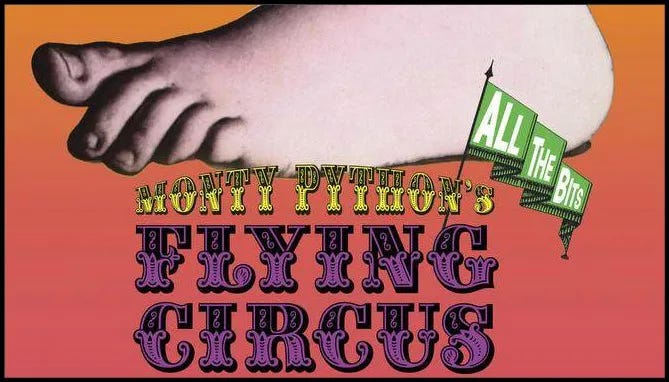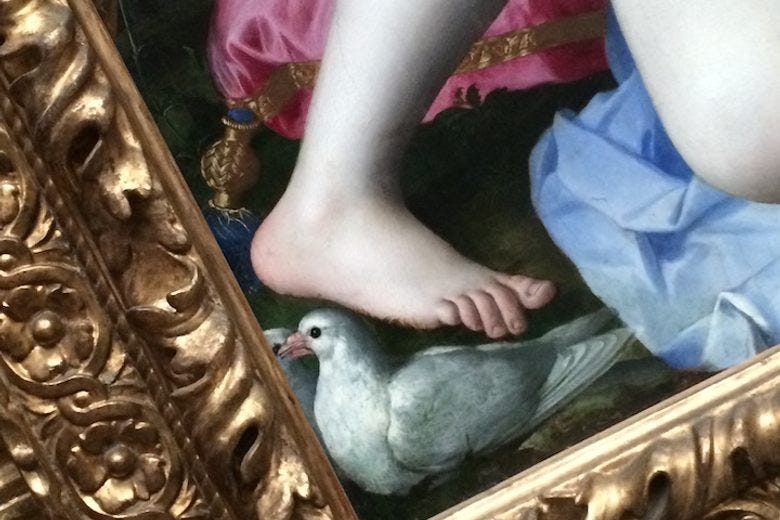Here’s an odd connection between a 16th Century artist and a 20th Century comedy troupe.
London’s National Gallery considers Agnolotti Bronzino's “An Allegory with Venus and Cupid” one of the most intriguing paintings in their collection.
Bronzino (1503-1572) was a leading painter of mid-16th-century Florence and primarily known for his portraits, including The Madonna and Child with Saints, also held in the National Gallery.
Why the gallery considers “An Allegory with Venus and Cupid” intriguing is outlined in its summary:
“Thought to have been a gift to King Francis I of France from Cosimo I de' Medici, ruler of Florence, it contains a tangle of moral messages. Venus, goddess of love, steals an arrow from her son Cupid’s quiver as she kisses him on the lips. Cupid returns her kiss while attempting to steal her crown. The smiling little boy behind them is foolish Pleasure, who doesn’t seem to notice the thorn piercing his foot, symbolizing the pain that so often follows pleasure. Fraud or Deceit, the pretty girl behind Pleasure, offers Cupid a honeycomb, her serpent’s body partially concealed. In the background is winged Father Time, identified by his hourglass. He holds a blue cloth with which he attempts either to conceal or reveal this series of deceits. The screaming figure beside Cupid may be Jealousy or Suffering, clutching her head in despair. The painting’s message may have been about the painful consequences of unchaste love, presided over by pleasure and deceit.”
That’s quite a story Bronzino is telling—a tangle of moral messages indeed.
But what does this have to do with Monty Python’s Flying Circus? Fans of the comedy show may recognize “the obliterating foot.”
How did the 500-year-old-foot of Cupid become an icon of British comedy? The foot was featured in the opening credits after being spotted by comedy troupe member Terry Gilliam on a visit to the National Gallery.
What would old Bronzino think about MP’s “the obliterating foot”? Would he consider it theft, fraud, deceit, or simply foolish pleasure? Another tangle of moral questions.







Bronzino's 🦶 is right. Monty Python's foot is not. 'Tis always best to be right. Can good morals come from Englanders who still have their heads?
Who woulda thunk it?!